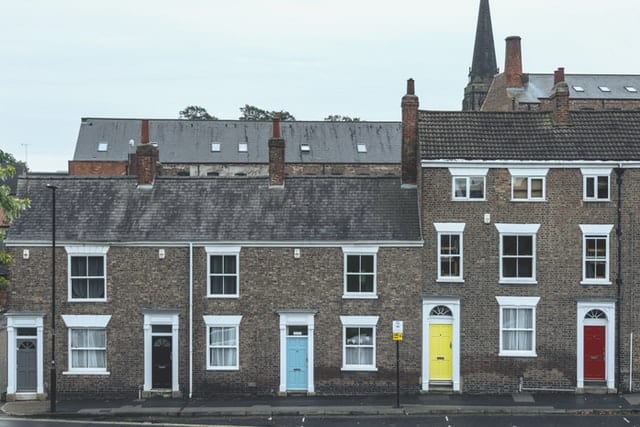
How to prevent penetrating damp
Penetrating damp is one of the common types of damp that can cause issues in a home, and is usually caused by water and moisture from outside the home making its way into the exterior. Due to the high amount of wet weather that we will often get in the UK, penetrating damp can often be a problem in UK homes, particularly in older properties that were not built with damp-proofing in mind. Penetrating damp can occur for several reasons and is more common when the bricks are porous and allow the water through, in homes that do not have a cavity wall, and in homes that are poorly maintained and might have problems like cracks in the exterior brickwork or windows where the sealing is deteriorating. Penetrating damp can be a serious issue if left unchecked and can lead to bigger problems in your home including water damage and mould.
What is Penetrating Damp?
As the name suggests, penetrating damp is a type of damp problem in the home which occurs when the moisture makes its way through from the exterior of the home. This can happen for many reasons. Porous bricks that have not been treated with a damp-proof coating, for example, might allow water to get through where it will impact the internal walls after rainfall. Anything that allows moisture to get in through the walls of your home can lead to a penetrating damp problem.
What is Penetrating Dampness Caused By?
Poor home maintenance is one of the common causes of penetrating damp. Water that is able to get through cracks in the exterior walls or damage to the roof and window frames can quickly lead to penetrating damp. It can also be caused by porous bricks that have not been treated with a waterproofing solution, leaving them susceptible to allowing the water through where it might affect the interior of your home, especially if there is no cavity wall. Homes with a solid brick wall rather than a cavity wall tend to be more susceptible to penetrating damp, since there is no air gap to trap the moisture on the outer wall when it gets through. Some common causes of penetrating damp include:
- Cracked rendering: When the render is damaged, water will be allowed to penetrate through it and this can result in further smaller cracks.
- Blocked downpipes and guttering: This may direct water towards the home and encourage penetrating damp. Fortunately, unblocking or repairing the gutters is usually an easy way to fix the problem.
- Damage to the roof: Anything that could cause water to get in through the roof like damaged or slipped roof tiles can result in water getting in.
- Damaged windows: Windows that are aging or badly sealed might need to be repaired or replaced to prevent penetrating damp from getting through.
- Porous bricks: Over time, bricks can become damaged which can lead to them becoming porous and allowing water to penetrate through.
What is the Difference Between Rising Damp and Penetrating Damp?
Understanding the two different types of damp is important for any homeowner. Rising damp is a type of damp that is usually caused by problems with the damp-proof course at your home. This is a waterproof layer designed to protect your foundation and internal walls from damp; however, if it is not working effectively, it could lead to moisture draining towards the home rather than away from it. Rising damp is different from penetrating damp mainly in how and where it will appear. While penetrating damp is likely to appear as localised patches on the walls where the water is making its way through, rising damp will happen on the ground floor only of the home, and is often just above the skirting boards. Sometimes it will rise to a certain height but will not usually go further and you don’t see it on the top floors of your home.
How to Solve Penetrating Damp
The first part in solving penetrating damp is to figure out how the moisture is getting into your home from the outside. A damp proofing professional can come to inspect your home and determine where the issues lie. They will perform a thorough inspection to find out which areas of your home are weaker and letting the water in, providing you with advice on how to rectify the problem and prevent further damp issues in the future. It’s important to make sure that you have found the cause of the penetrating damp and repaired it before you take any damp-proofing measures at home since, no matter how many damp-proofing strategies you take, penetrating damp will always come back regardless if you have not dealt with the root of the issue.
How to Stop Penetrating Damp
Locating the source of the moisture that is entering your home is the only way to stop penetrating damp. In most cases, this could be due to leaks coming in through cracks and holes in the external wall, or you might notice penetrating damp around windows and door if they have not been sealed properly or if the sealant is wearing away over time. Porous bricks that have not been treated with a damp-proof coating might be the cause of the damp if you cannot find any holes, cracks or sealant issues.
Guttering problems might also worsen penetrating damp problems by directing water towards, rather than away from the property after rainfall. Gutters and downspouts are designed to direct the water away from your property and its foundations. However, gutters that are clogged, broken, or leaking can send water straight to the house where it might find its way inside and lead to damp. If you suspect that your gutters might be playing a part in the penetrating damp issues that you are experiencing at home, it’s important to have them checked by a professional immediately. Sometimes all you will need is a professional gutter cleaning to see a huge difference.
How to Prevent Penetrating Damp?
Keeping your home well-maintained and in good repair is key to preventing penetrating damp in the future. Since poor maintenance is one of the most common causes of penetrating damp, it is important to make sure that you check your home regularly to ensure that there are no areas where the water could be getting through. Make sure to check your external walls for any signs of cracks, holes and other damage that could allow moisture to get inside the home, and check your roofing, doors, windows, and other fixtures too. You can also help to prevent penetrating damp from getting into your home through the bricks by treating your exterior brickwork with a damp-proof coating. This is usually best done during the summer to allow the brickwork time to dry. However, be careful when it comes to choosing the right damp-proofing treatment since you will want to choose one that allows moisture to escape from the inside wherever possible, to prevent issues with condensation damp at your home. Otherwise, you will need to make sure that your home is property ventilated and be mindful of any activities that you could take part in at home like cooking or washing clothes that might lead to additional moisture which will show up as condensation and then damp on the walls if the warm air has nowhere else to go.
Is Penetrating Damp Covered by Buildings Insurance?
Unfortunately, many home insurance companies fail to cover penetrating damp as an issue since the property defect that has led to penetrating damp occurring in the home might be considered to be general wear and tear. If you are in the process of getting buildings insurance and want to make sure that you are covered for penetrating damp problems in the future, carefully consider the policy that you opt for and make sure that you choose one that covers penetrating damp wherever possible. In some cases, for example, where the defect leading to the penetrating damp has been caused by a storm or other natural disaster, this might be covered by your home insurance. It’s a good idea to get in touch with your insurance company directly to find out about what is covered in terms of damp.
If the defects that are leading to penetrating damp inside of your property have been caused by poor maintenance or a lack of maintenance on the property, this will typically not be covered by your home insurance company in any circumstances since it is your responsibility to ensure that your property is maintained and kept in good condition. This might relate to defects with the roof or walls that have occurred as a result of aging and general wear and tear, which home insurance companies expect you to pay for maintenance for as the property owner. Around 10% of homeowners wrongly believe that they can use their home insurance policy to pay for fixing damp problems at home, so it’s important to double-check your policy and find out exactly what is and is not covered.
Understanding the signs, causes, and how to prevent penetrating damp will help you keep your home in the best condition.

